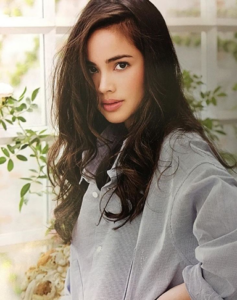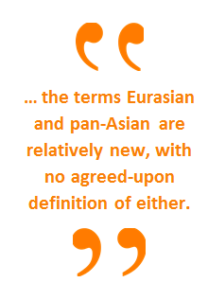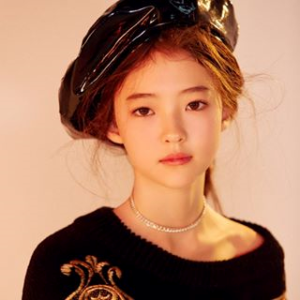Once derided for their mixed heritage, “Eurasians” are now in fashion and nearly idolised for their exotic appeal, but they say appearances may be deceptive… and possibly altered.
This has heralded a surge in the popularity of not only Eurasian looking celebrities, but it is also is proving a boon for cosmetic surgeons. With this change of status quo comes two immediate follow on effects; the skyrocketing incomes for these celebrities and their surgeons; and the growth of internalised racism.
Although not mixed race, hugely popular Chinese actress Dilraba Dilmurat, better known as Dilireba is, in many ways, the epitome of popular beauty in Asia today. With her large, double-lidded eyes, small sharp nose, thin face, and tall figure, she is idolised in her home country and could be considered the poster girl (literally) for cosmetic surgery.
After photographs of her at a 2017 fashion show appeared online, fans fawned with comments such as: “Her skin is so white it glows” and, “So white and beautiful”, fuelling further debate over concepts of beauty, and whether Asians have become trapped by the Western ideals of what looks good, instead of celebrating their own.
Question: It has been often said that mixed-race people are generally more attractive than non-mixed people. With that in mind, is Dilraba Dilmurat trying to look more Western, or is she trying to look more mixed? Join the discussion here in our forums.
In Thailand, Urassaya Sperbund, who is half-Norwegian and half-Thai, appears in local advertisements for Uniqlo and Maybelline, and is a Thai brand ambassador for fashion house Louis Vuitton.

For the smash hit movie Crazy Rich Asians, half Malaysian, half British actor Henry Golding was cast as Nick Young, the wealthy Singaporean Chinese lead character.

When Miss Philippines, Catriona Grey, won the Miss Universe 2018 pageant there were murmurs in the country over the Filipino-Australian’s looks. Some felt she did not look Filipino enough and represented a westernised idea of beauty.

In China, actress Angelababy (Angela Yeung Wing), who is one quarter German and three quarters Chinese, appears in campaigns for fashion-house Dior and watch brand Tag Heuer. She has denied persistent rumours of having undergone plastic surgery, successfully suing those publishing such claims, insisting that her European grandfather’s genes explain her looks.
After the Portuguese and other European traders arrived in China in the early 1800’s, mixed families emerged across different sites where Europeans and Chinese commonly intermingled. In fact, the terms Eurasian and pan-Asian are relatively new, with no agreed-upon definition of either.
Fast forward to today and mixed Eurasians rarely warrant comment, but in the late 19th and early 20th century many obscured their ethnic and cultural backgrounds to pass as either Asian or European. Eurasians were called “half-castes” and denigrated for their mixed parentage.
Today, those with Western features have come to represent the beauty ideal in many parts of Asia.
India has its Anglo-Indian community and Sri Lanka has Dutch Burghers. In Malaysia and Singapore, Eurasians are comprised mainly of those with Dutch, Portuguese, Spanish and British ancestry. Elsewhere, in the Philippines, Macau, and Hong Kong, Eurasians make up a small but visible portion of the population.

In much of Asia, the Eurasians are a reminder of colonial legacies, and admiration of their Pan-Asian features reflects a combination of Western beauty standards and the globalisation of mass media inundating Asians with images of Western models and celebrities.
Pale skin has long been a beauty ideal in many Asian cultures, often signifying ones status in society, as those with darker skin tone generally laboured under the sun.
The Eyes Have It
For people of Chinese, Japanese and Korean descent, the single eyelid was previously not only a norm, but also an ideal look.
During the Qing dynasty in China, “thin, long eyes” were desired, whereas “large, wild eyes” were considered rough and less attractive. According to the 1600s playwright and novelist Li Yu. “Women with slim eyes are of tender nature, whereas those with large eyes are hussies,” he wrote.
Nearly two centuries later, that view prevailed in much of the region, including in neighbouring Japan.
Those views changed in the 20th century, with the increased Western presence in the region, and early instances of double eyelid surgery were performed.
Today, the double eyelid operation is among the top five most-performed plastic surgery procedures in the world, with more than 1.3 million done in 2017, according to the International Society of Aesthetic Plastic Surgery.
The South Korean plastic surgery market was worth US$26.3 billion in 2016 and is expected to grow to US$44 billion by 2025. In South Korea alone, 980,313 plastic surgery operations were recorded in that year.
Question: Mainstream East Asian media leans toward mixed/Western features as the ideal look. Nobody seems to have asked mixed people what they think! Do the “eyes have it” or is it marketing gone Euro mad? Join the discussion here in our forums.
Race and Privilege
Teo Ser Lee, Miss Singapore 1988, says Eurasians and those with Caucasian features have long been favoured when it comes to media and advertising in Singapore.
Recalling her days taking part in beauty pageants, she says: “In the 1980s, out of 20 contestants there might be one or two Eurasians. They always stood out from the rest and were always the first to get maximum publicity and sponsors.”
 She did not find it unsurprising at the time. “When we were in school and we had classmates who were mixed, they’d be singled out in a good way,” she says
She did not find it unsurprising at the time. “When we were in school and we had classmates who were mixed, they’d be singled out in a good way,” she says
“Everybody wanted to be their friend. It was really a status symbol and it hasn’t changed.”
In South Korea, half-Korean, half-American child model Ella Gross shot to stardom in 2017 after her mother shared photos of the 11-year-old on social media. Local and international press have not only been taken by her “doe-eyed look and dainty features” but have also called her “the most gorgeous child model in the world”. Ultimately, experts say the notions of racialised beauty standards needs to be examined closely.
Question: Have you experienced favouritism because you were mixed? Or was it just the opposite? Join the discussion here in our forums.

